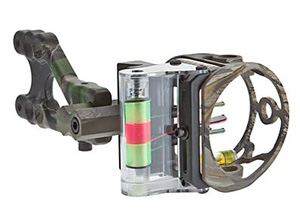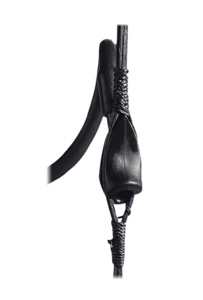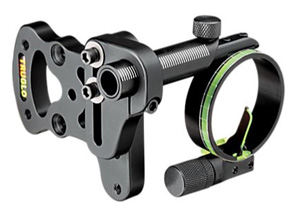
Anyone who shoots a compound bow knows that a good sight is critical. Without it, you stand less of a chance of shooting tight groups or arrowing a deer in low light or at extreme ranges.
 |
| The number of pins you need in your sight depends on where you and hunt what type of shot opportunities you might have. |
So what qualities should a good bow sight have? Here are, in my opinion, the essentials.
Right Amount of Pins for the Job
The number of pins you really need depends on where you hunt and the type of shot opportunities you typically run into.
Where I live in the east, three pins are just about right for whitetail hunting. I set mine at 20, 30 and 40 yards and, in truth, I've never used the 40 yard pin. Out west however, when hunting antelope or mule deer across the open plains, for instance, you might get frequent shot opportunities at longer ranges so more pins extending your range out to as much as 60 yards might be justified. The same might be suitable for those going on a caribou hunt. If that's the case, make sure that your sight comes with or can support the appropriate number of pins. Ensure that each is a distinctive color too. Otherwise it's easier to pick the wrong pin in times of high pressure.
 |
| If you use a peep sight, make sure it can let in low light so you'll be able to see the sight pin. |
Some hunters prefer just one pin. They set it at their preferred range (generally 20 yards) then learn how high or low they have to hold at ranges before and beyond. They say that there is no chance of choosing the wrong pin in a hunting situation and there's something to be said for that.
Keeping Them Fine
Whether you are hunting or target shooting, the hallmark of a good sight pin is its fineness. Simply put, the bigger the end of the pin is, the harder it will be to shoot tight groups or place an arrow precisely where you want it in an animal's vitals. Examine the sight pins carefully for this reason. If you can, pick up the sight and aim at a small target (about 4 or so inches across) at 20, 30 and 40 yards away (more if you need to shoot past that). Then compare the size of the sight pin to the size of the target. If it seems too big to allow precise placement of arrows look for smaller pins.
Visibility in Low Light
A whole lot of deer and big game is shot at first and last light, so you better have a pin that stands out during those times. Some are illuminated by the nature of the material they are made of. Fiber optic pins are a good example of this. Others require a battery to ensure they light up.
Pass up a shot at a deer because of a poorly illuminated pin and you'll never use those sights again — I guarantee it. So make sure your sights light up well and can be easily found through a peep sight if you use one. Adjustability of the illumination is a nice feature too and so are commonly found batteries, if the sight requires a power source.
Speaking of peep sights, if you use one, make sure you can see through it in low light to find that sight pin. That typically means getting one with a larger aperture or with paint or material that allows you to easily find that aperture in low light. Kisser buttons help line you up to do this too. And some archers forego the peep sight all together simply relying on the consistent anchor point that a kisser button provides.
Ease of Adjustment
 |
| A pendulum sight swings to adjust for ranges out to about 40 yards and make shooting from a tree stand a simpler process. |
A good sight should have fine and easy elevation and windage adjustments. Allen keys and other tools are provided for some models, but I prefer sights that can be adjusted incrementally with adjustment knobs. They make fine tuning easy.
On the Level
Many thoughtfully constructed sights are equipped with a level these days. This helps minimize canting your bow. A canted bow, of course, means a canted sight pin which can changed the impact of the arrow by several inches and becomes more severe the longer the range. A level helps you avoid this.
Specialty Sights
If you hunt primarily from a tree stand, you might consider a pendulum sight which swings to adjust for ranges out to about 40 yards once properly set up. These make shooting from a tree stand a simple process in that you don't have to choose sight pins. Some can be locked in place for ground use too.
These are the basic qualities that a good bow sight should have. As always, spend as much as you can afford because this is what allows you to make the most of your bow's accuracy. The good part is that a sight is transferable to your next bow too. So the investment you make can extend a long time.
- 13333 views

